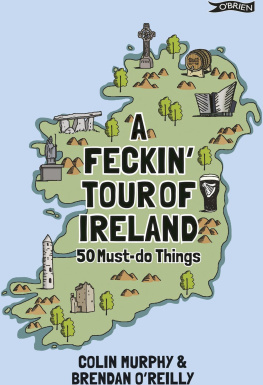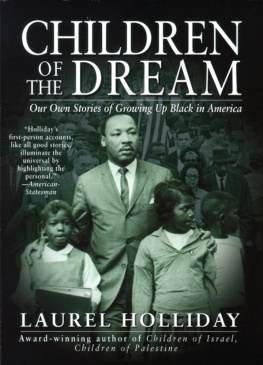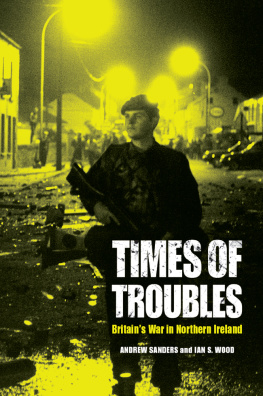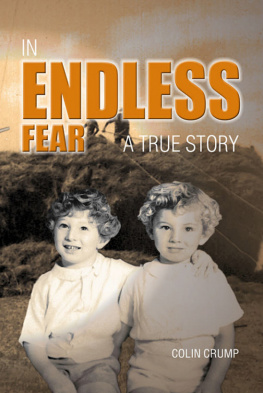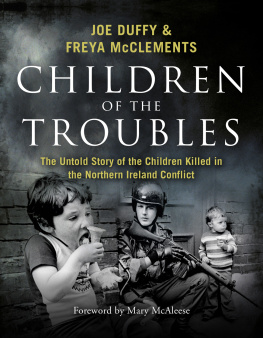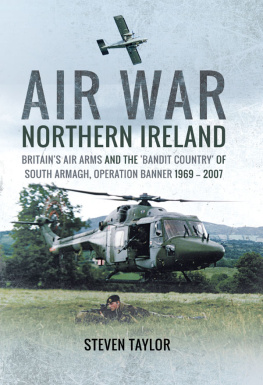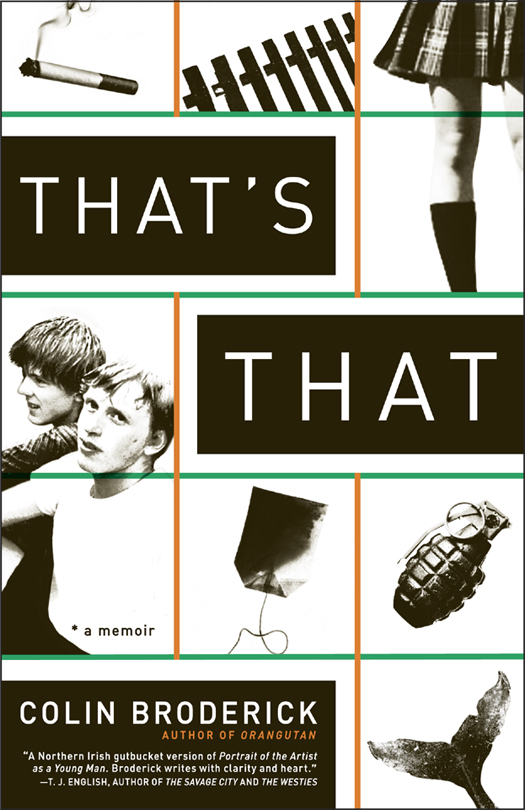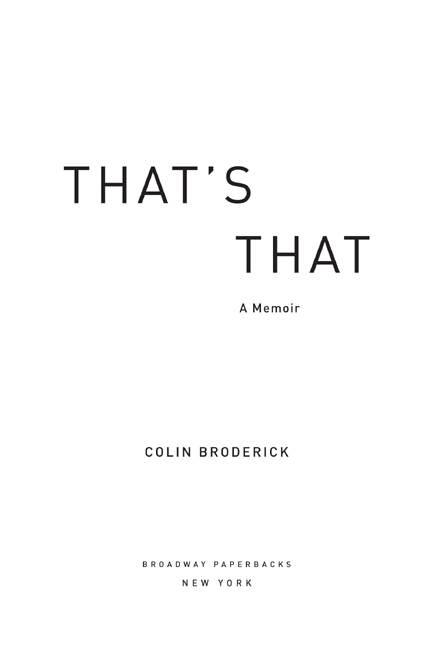ADVANCE PRAISE FOR
THATS THAT
What poverty is to Angelas Ashes, political turmoil is to Thats That, Colin Brodericks stirring coming-of-age memoir of growing up Catholic in the North during the so-called Troubles. Written with verve and raw honesty, the book is both a captivating saga of personal discovery and the eye-opening story of how one boy experienced this shocking chapter in Irish history.
Billy Collins, former U.S. poet laureate
A Northern Irish gutbucket version of Portrait of the Artist as a Young Man. Colin Broderick writes with clarity and heart about a time of moral ambiguity, when war and repression were daily facts of life. Religious bigotry, class resentment, a legacy of rebellionthe author expertly peels back the layers of his Irish Catholic upbringing during the time of the Troubles. Must reading for anyone seeking to understand the psyche of modern Northern Ireland.
T. J. English, author of The Savage City, Paddy Whacked, and The Westies
In his searing memoir, Thats That, Colin Broderick renders the conflict in the North of Ireland with an intimacy and honesty at once brutal, poignant, and unforgettable. Somehow, amid a landscape of ancient hatreds and unblinking cruelties, he manages to unearth the possibilities of hope and redemption. This is a deeply moving story told by an unflinching and eloquent truth teller. Broderick is a writer of extraordinary talent.
Peter Quinn, author of Looking for Jimmy and Hour of the Cat
ALSO BY COLIN BRODERICK
Orangutan

Copyright 2013 by Colin Broderick
All rights reserved.
Published in the United States by Broadway Paperbacks, an imprint of the Crown Publishing Group, a division of Random House, Inc., New York.
www.crownpublishing.com
Broadway Paperbacks and its logo, a letter B bisected on the diagonal, are trademarks of Random House, Inc.
Library of Congress Cataloging-in-Publication Data
Broderick, Colin.
Thats that : a memoir / Colin Broderick. First edition.
1. Broderick, ColinChildhood and youth. 2. Broderick, ColinFamily. 3. Social conflictNorthern IrelandTyroneHistory20th century. 4. Tyrone (Northern Ireland)Social conditions20th century. 5. Tyrone (Northern Ireland)Social life and customs20th century. 6. Tyrone (Northern Ireland)Biography. 7. CatholicsNorthern IrelandTyroneBiography. 8. Northern IrelandHistory19691994Biography. I. Title.
DA990.T9B76 2013
941.640824092dc23
[B]
2012040086
eISBN: 978-0-307-71634-7
Cover design by Maria Elias
Cover photographs: (tea bag, grenade, cigarette) Ocean/Corbis; (whale tail) amanaimages/Corbis; (The Flag of Ireland) The Irish Image Collection/Design/Pics/Corbis; (schoolgirl) Opus/amanaimages/Corbis; (author and cousin on front cover) Mairead McClean
v3.1
For my parents
Michael and Claire Broderick
And Erica
You are all that is clean of me
Contents
I will speak and I will speak
So only secrets I do not know I keep
Will whisper here upon the grass
And follow others through the trees
To the rivers lakes the seas.
Mother. Ireland.
Seen from the window of a plane Ireland is a patchwork quilt, little square fields of green stitched together by thin rows of thorns; spring green, fern green, forest green, pine, sea and shamrock green. From above, she is clean, mystical, magical to behold. That is her first great act of deceit, her lush, rolling beauty the first betrayal of her truth, for on the ground, and deeper still, buried beneath that verdant lawn is her pain; underneath, there is blood.
I assume youve heard bits and pieces of the history of Ireland already, some of the landmark atrocities that have made international news over the years, or perhaps youve heard snippets grumbled over small glasses of amber in the dim light of a smoky tavern in the Bronx, stories of the long and bitter hatred between the English and the Irish, of heroic young men in balaclavas, petrol bombs being hurled into the dark night, monuments of flame on the claustrophobic streets of Belfast, the ghosts of skeletal boys, naked and excrement-smeared, starving themselves to death in the cold cells of the H-Block. And if you did receive your Irish history lesson in a bar from some furtive creature with a brogue, then as the night wore on, you surely heard about his mother also, for every drink poured in an Irish bar leads back to the mother. As you may well know, there is no mother like the Irish mother, and there is no love more wounded and fierce than the love between an Irish mother and her son.
In honor of that age-old tradition I, too, will start with the history. (The mother I will get to in just a little bit.)
In about 6000 BC the first humans arrived in Ireland. They stayed close to the shores, hunting and fishing for their food. Two thousand years later they had evolved into farmers; they grew crops and kept sheep, pigs, and cattle.
Around 500 BC the Celts arrived in Ireland and took to running the show. They were a wild bunch, prone to battles and orgies of food, drink, dancing, and much lovemaking. Their spiritual guides were Druids, and polygamy was embraced if you could afford it; many could. The Celts divided Ireland up into many kingdoms and worshiped many gods, and the craic was high and mighty, for a while.
Things went along like that without much of a hiccup until an English lad called Patrick came along. He had been kidnapped and held as a slave for a few years by the Celts and he returned in the year AD 430 for retribution. He began telling the Celts that their lifestyle was evil and that the real God, the one true God up in heaven, would punish them for their debauched ways and sentence them to a place called hell. There they would burn in a molten lavatype substance for eternity once they died. Patrick had the gift of the gab, as they say. Many listened. Christianity had arrived.
Six hundred years later, in 1155, once the Irish had been corralled into a more malleable state with a good dose of Christian shame, humiliation, and fear, Pope Adrian came along, the first and only Englishman ever to hold the papacy. He gave the entire island of Ireland to the king of England, King Henry II. Henry, in turn, bequeathed unto his son John the new moniker Lord of Ireland, and John was welcome to hang on to his new title just as long as he kept paying Adrian and the Vatican an annual fee for the honor of retaining sole slavery rights of the Irish people. It was a sweet deal, and John was just about as happy as a clam at high tide to throw the boys over at the Vatican their yearly bone.
In 1536, Henry VIII had himself anointed the king of Ireland by the Irish Parliament, which was comprised at the time of a bunch of his English buddies. Henry VIII decreed that all the Irish chieftains must Anglicize their names and that all of the English landowners, who had arrived in Ireland claiming all the best land up and down the country for themselves, must now clear their estates of native Irish workers. Of course, this was impossible because the landowners needed to keep the Irish on as slaves to work the land, but the threat of banishment for even the slightest misstep was a wonderful little tool to keep the Irish workers on their toes, and productivity soared.


